Table of Contents
- What is digital asset management?
- 5 Key Benefits of Digital Asset Management
- Factors to Consider When Evaluating DAM Software
- Free Open-Source Digital Asset Management Software
- Premium Digital Asset Management Software
DAM software automates or simplifies the asset management process.
A DAM platform not only stores digital assets in a central location, it also automates workflows and tasks like watermarking images, provides sophisticated search capabilities for locating media files, and manages permissions and other security protocols.
Video Digital Asset Management
When you hear digital asset management, you might think of images and logos first — but videos are incredibly important assets.
In fact, 83% of video marketers say video has helped them generate leads. They also say video has helped them acquire customers, engage social media audiences, increase understanding of their products and services, and more.
Video digital asset management is a type of software designed to help companies scale their production of high-quality and on-brand video assets and distribute them across channels. With this type of software, you can do one or more of the following:
- Create templates with brand elements like logos to ensure consistency across teams
- Localize videos to different markets and languages
- Create variations to test and optimize your videos for different ad platforms and customer segments
- Quickly resize video assets to fit different online and social media ad formats
These are just a few benefits that video digital management software offers.
Most DAM systems include the video creation and modification tools you need to quickly create and update high-quality videos. These video assets are then stored in a central library along with your other digital assets so they can be easily retrieved, shared, and distributed across content channels.
The DAM system Bynder, for example, is integrated with Video Brand Studio. This tool simplifies every step in the video content lifecycle, from creation to distribution. For example, Video Brand Studio allows users to create video templates using approved clips and other brand assets and then automatically distributes videos directly to Facebook, Instagram, and YouTube.
5 Key Benefits of Digital Asset Management
Let’s take a closer look at the benefits of DAM to help you understand why you need such a platform for seamless operations.
Increased Productivity
Digital assets can be used by many teams across your company — your sales, marketing, and customer service teams are just a few. With a DAM, these teams don’t have to request assets from your designers.
Teams can access these assets from one centralized location, while designers can focus on creating more. This helps boost productivity and efficiency across your company.
Brand Consistency
Your brand consists of several core assets, including your logo, color palette, and typography. If employees can’t find these assets, they may resort to using outdated versions or the wrong ones.
This can weaken your brand identity. With a DAM, you can keep all your core and up-to-date assets in one place to ensure all internal teams (and external folks like partners, affiliates, agencies, and clients) will have access to the correct files.
Security and Compliance
Without a DAM, employees might save and share digital assets over email, Slack, Google Drive, Dropbox, even text, or maybe all of the above. With these assets floating around in so many different places, it’s extremely difficult to keep them secure and ensure they’re only accessible to approved users.
A DAM solves these issues. By only placing files in a centralized location, you can set up permissions and guidelines to control who has access to them and how to use them.
Operational Transparency
A DAM system creates transparency within your organization to make your routine workflows more seamless. It streamlines project management and boosts collaboration since everyone can access the necessary assets with a simple search.
By simplifying access to relevant resources, you can set up more impactful processes for each team and eliminate redundancies.
Optimal Resource Allocation
With a centralized platform for all your resources, you can bring your entire workforce on the same page. They can access any document or asset from a single platform without jumping through hoops to find relevant resources.
This quick access can prevent time wastage and improve efficiency. It optimizes the process of assigning and using resources in different use cases.
Factors to Consider When Evaluating DAM Software
Before I review our top recommendations for a digital asset management platform, let’s look at the main factors to consider when testing your options.
- Ease of use: Since your entire organization will use the DAM software, you have to pick a user-friendly tool ideal for people of varied skill levels. An intuitive interface and navigation would mean you don’t have to conduct extensive training to drive adoption. Plus, check whether this platform supports multiple file formats, quick editing, and version control.
- Integrations: A digital asset management platform can’t operate in a vacuum. You have to integrate it with other tools in your stack, like CRM, marketing automation tools, design tools, and more. Look out for the tools supported in your DAM platform to prevent data silos and create a centralized system.
- Scalability: As your organization grows, so should your digital asset management platform. This flexibility in storage is important for storing large assets whenever the need arises. So, pick a platform capable of accommodating more assets without compromising performance.
- Search function: A good DAM platform offers a robust search engine to conveniently find any asset. Evaluate the search function with features like keyword searches, metadata, filters, and more. This platform should allow you to easily retrieve a document based on the information you have about the asset.
- Access control: Look for the security and access control features in your DAM software to securely store your files. Granular access controls help you create specific permissions for different users and groups. You can also set up authorization to access and modify different assets.
Keep this checklist handy when you compare different DAM software for your organization.
Free Open-Source Digital Asset Management Software
Open-source digital asset management software is always free — or at least offers a free plan for users.
While it lacks some functionality and flexibility that premium alternatives offer, it’s a great way for freelancers and small teams to get organized and streamline their creation and distribution processes. Let’s check out some of the best options.
1. ResourceSpace
Best For: Budget-conscious organizations like universities and nonprofits
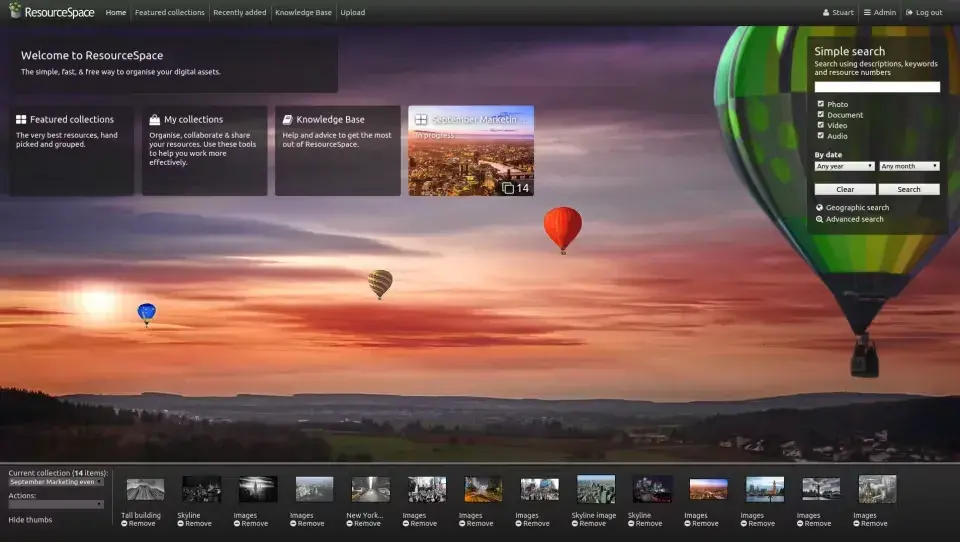
ResourceSpace is an excellent option for universities, nonprofits, and other companies that want to adopt a digital asset management system while keeping their costs low. The free plan for this open-source DAM system has no limit on the number of users, but there is a limit of 100GB of free storage.
ResourceSpace offers many features to simplify uploading, organizing, and accessing files, including user permissions, search tools, version control tools, and an analytics function.
What I like
ResourceSpace’s AI-automated tagging functionality makes file organization super seamless and efficient. The platform automatically tags each file with one of its default categories to save you the hassle of manually categorizing your assets, especially when uploading in bulk.
I also liked the detailed analytics dashboard that monitors usage for each asset. It can help identify your most-used assets for internal workflows.
2. Pimcore
Best For: Teams needing a free, open-source DAM with unlimited data
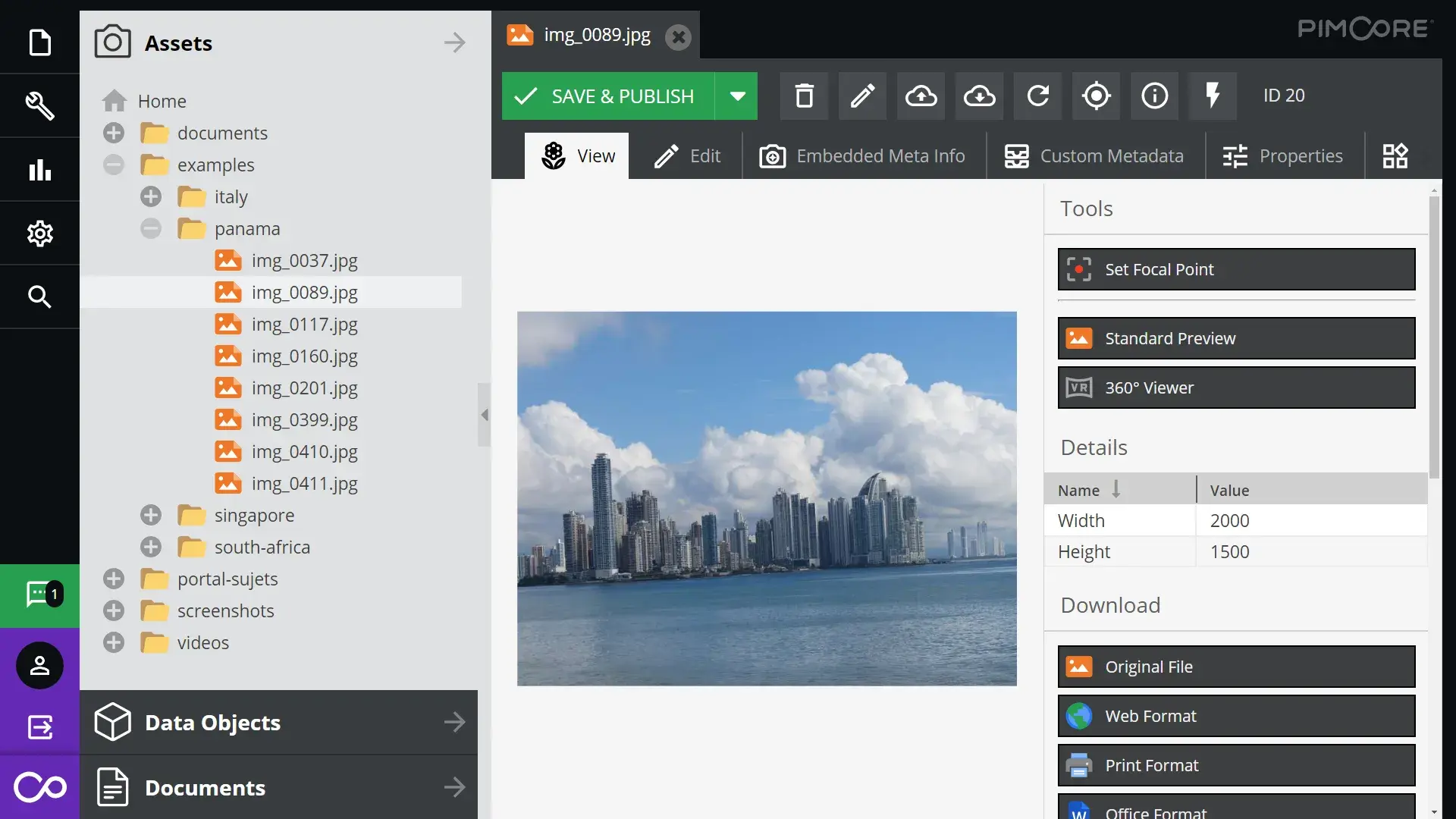
Used by more than 100,000 companies worldwide, including Pepsi, Sony, and Audi, Pimcore is open-source DAM software that enables companies to integrate, consolidate, organize, store, reuse, and manage any type or amount of digital assets.
Pimcore’s Community edition offers unlimited data, integrations, and users for free.
What I like
I was impressed to discover that Pimcore supports 200+ file types. The platform also has a built-in converter to convert image and video files into different formats.
Besides, Pimcore’s automated workflow management capability is great for doing more with your assets rather than just storing them. It offers a digital asset delivery system to transfer files to and from other tools.
3. Pics.io
Best For: Advanced search and sharing features
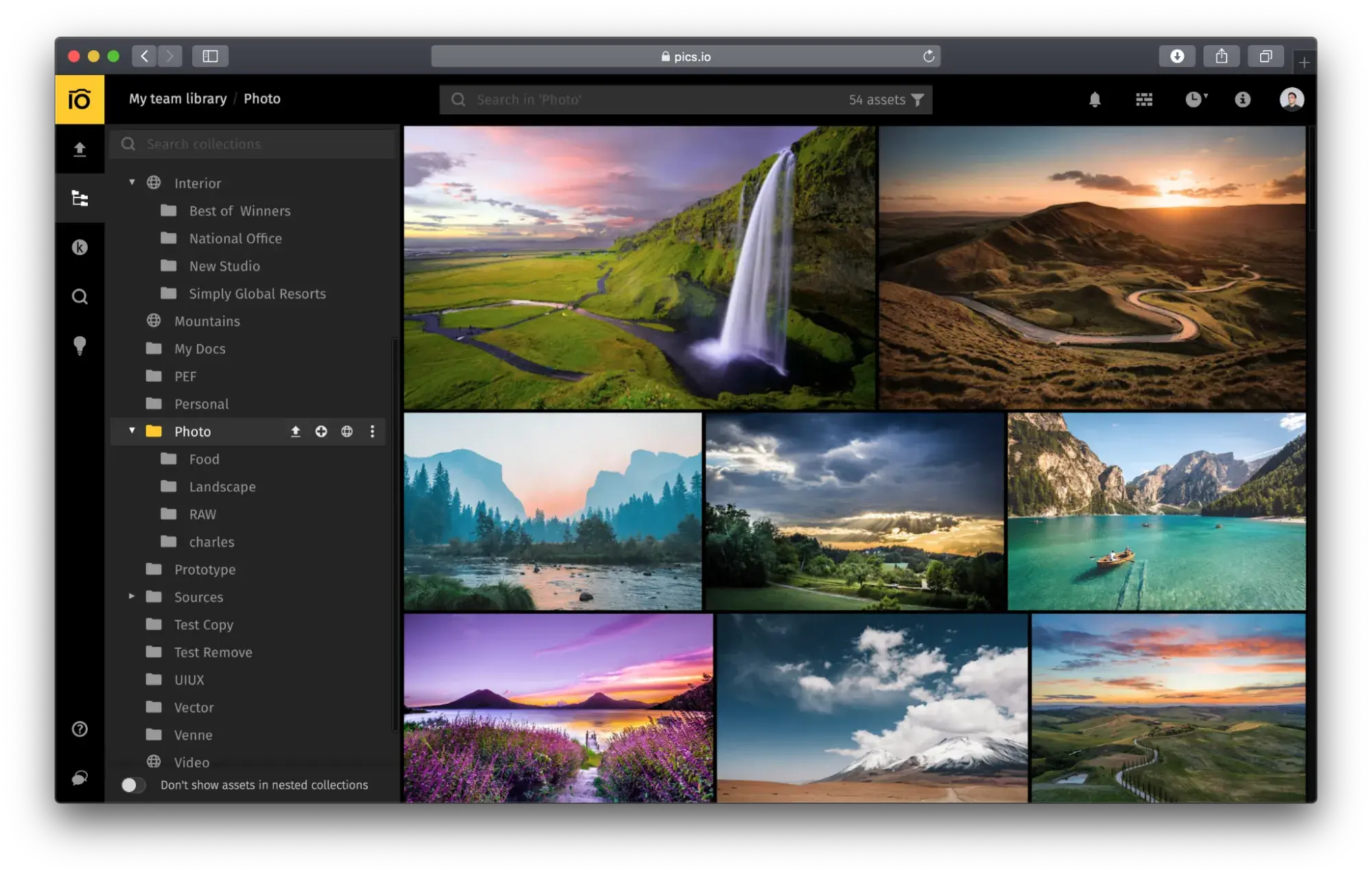
Pics.io is an ideal DAM system for individuals who are already paying for Google Drive storage. Pics.io lets you create and maintain an easy-to-use, centralized digital library for your assets on top of your cloud storage.
However, you are limited to a maximum number of 50 thousand assets in the library on Pics.io’s free plan and adding user accounts will cost you.
What I like
On its free tier, Pics.io lets you find files by type, content, filename, keywords, and more — thanks to Pics.io’s advanced search features. You can also publish and share media files individually or in bulk and create ready-made templates to use for future projects as well.
Pics.io offers three AI models to choose from for generating keywords for assets: Llama, Google Cloud Vision, and GPT 4o. You can also create customized asset descriptions using AI.
Premium Digital Asset Management Software
Proprietary digital asset management software tends to be expensive, but it’s also more feature-rich and easier to implement than its open-source alternatives.
Proprietary DAM software also typically comes with robust customer support. If you have some budget to spend, then you’ll be better off with one of the premium options below.
1. Brandfolder
Best for: Enterprise companies looking for advanced AI features
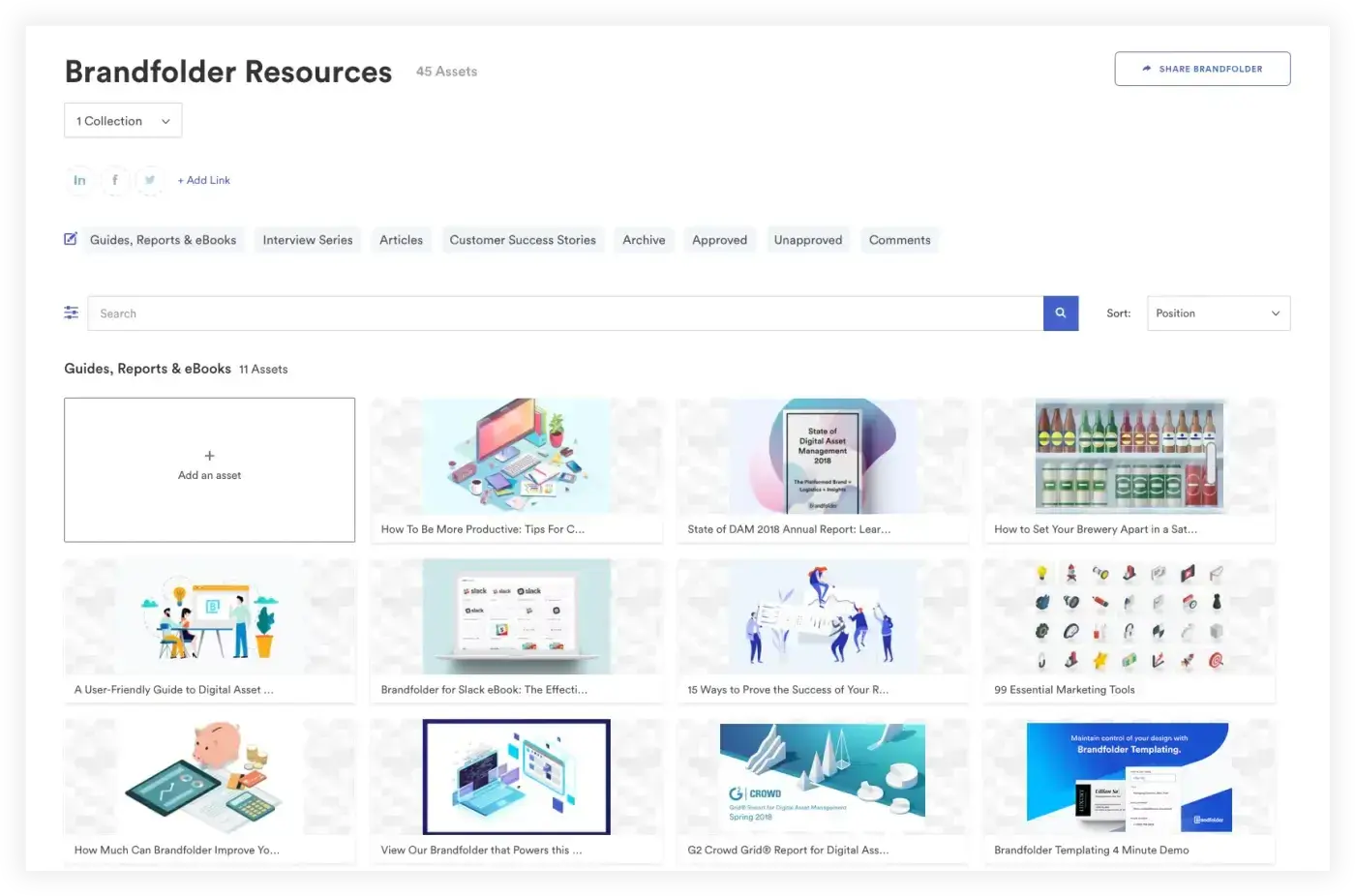
Brandfolder is one of the highest-rated digital asset management platforms that’s used by enterprise companies like Slack and Lyft.
One of its best features is Brand Intelligence, which uses a combination of proprietary AI and machine learning technologies to show who is using your assets, where they’re being used, and which are the highest-performing.
This proprietary AI engine also automatically adds tags when files are uploaded, recommends tags, prevents duplicate uploads, and translates video audio into text for even more advanced search functionality.
What I like
I particularly like that Brandfolder offers easy bulk uploading with drag-and-drop support to organize your assets. You can also use bulk editing tools, advanced video editing, templating, user management features, and more.
2. Adobe Experience Manager
Best for: A combined DAM and CMS platform
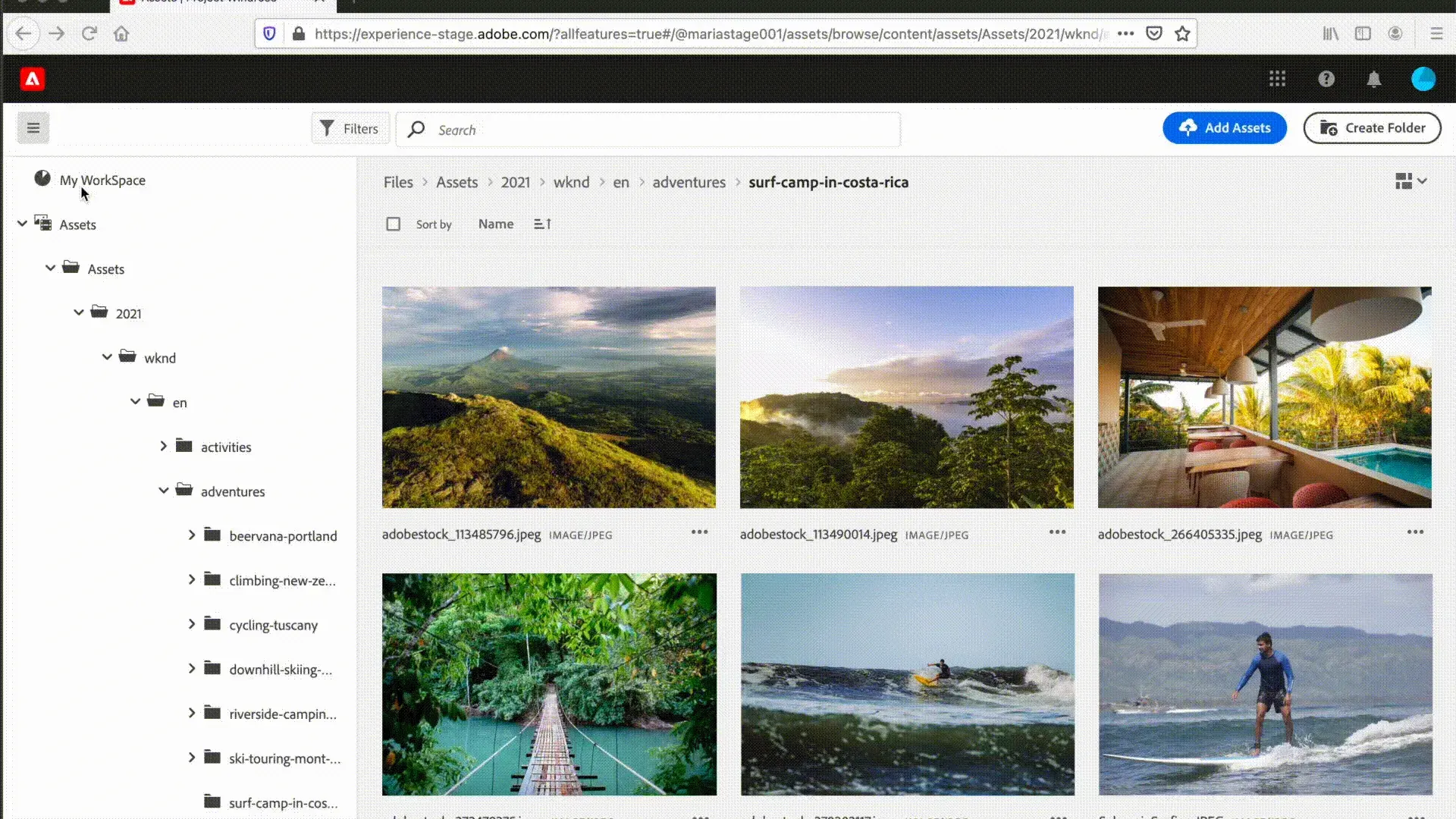
Adobe Experience Manager (AEM) is another enterprise solution for companies that need to deliver content across multiple digital channels. With automation, smart tools, electronic forms, developer tools, and cloud hosting, it offers the combined power of a digital asset management system and a content management system.
AEM allows you to create and reuse digital assets, called “Experience fragments,” across different channels and devices.
However, its price tag can be a problem. With costs of up to one million dollars per year, some companies may be better off with an AEM alternative.
What I like
Since they can be used with AEM’s data integrations and advanced targeting and customization features, Experience fragments will enable your teams to streamline content creation and deliver tailored experiences to your visitors wherever they are on your site.
3. Paperflite
Best for: Businesses focused on content engagement and analytics
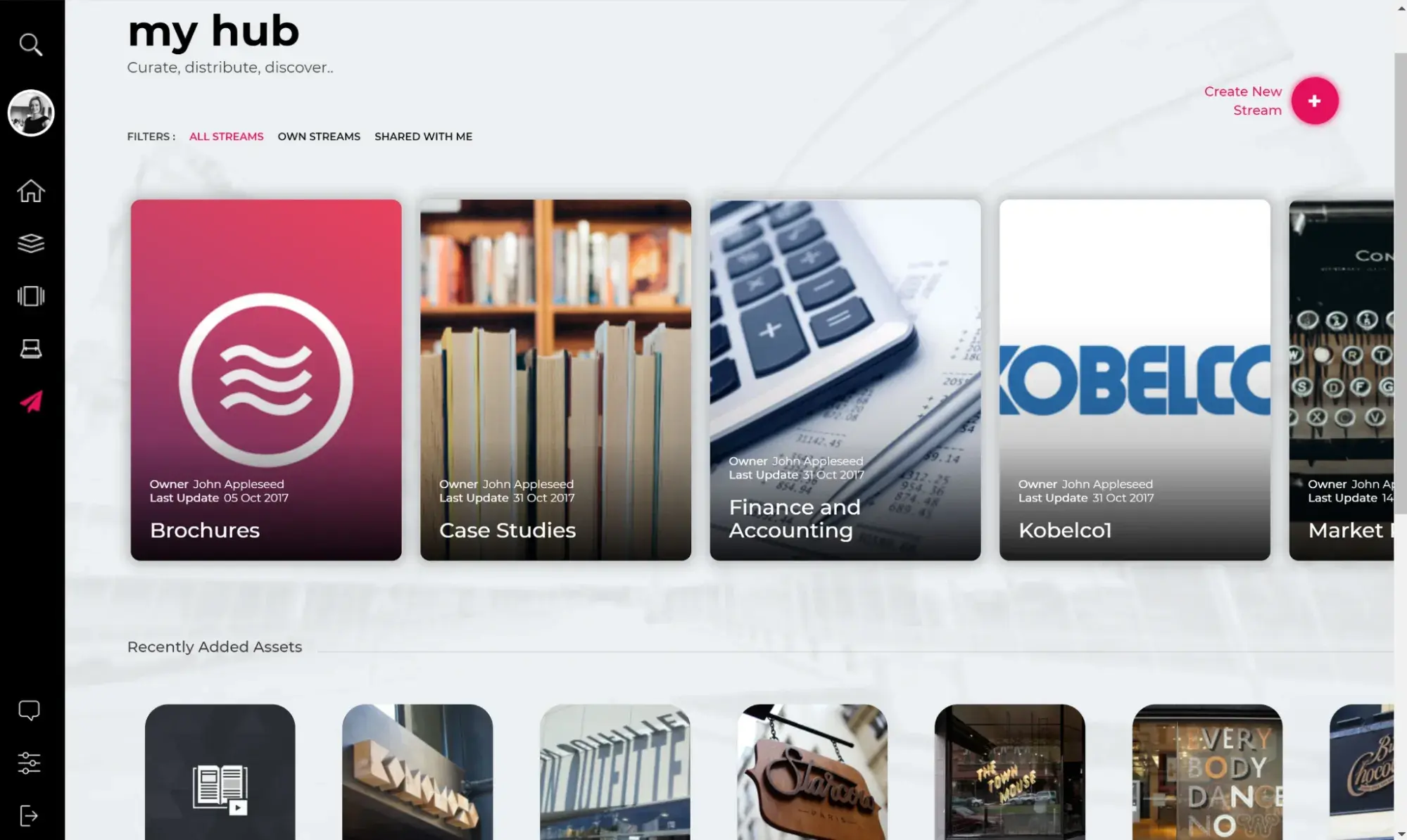
Paperflite is a comprehensive digital asset management tool that enables you to centralize, discover, share, and track your assets effectively.
The platform provides user controls to manage asset access and customization choices to maintain brand consistency. You can also access content analytics to gain valuable and insightful data, ranging from content engagement to revenue intelligence.
With Paperflite, you can easily streamline workflows, enhance collaboration, and ensure data security while achieving any marketing and sales objectives.
What I like
Your business can leverage Paperflite’s insights dashboard to measure content effectiveness, track audience engagement, and make data-driven decisions to optimize marketing strategies and maximize ROI. Besides, the platform integrates seamlessly with dozens of necessary tools.
4. Lingo
Best for: Aligning content and context inside flexible kits

Lingo makes it easy to organize, share, and showcase your brand in the way it was meant to be seen. Its flexible canvas lets you combine content and context, so every image, video, or document comes with the brand guidance needed for proper use. Build tailored kits and portals for vendors, press, or internal teams with drag-and-drop ease, permissions. and powerful AI-powered search.
What I like
Lingo helps teams share files with the right people, fast. Its clean, intuitive interface makes building branded kits simple, without the clutter or complexity of traditional DAM tools.
5. Canto
Best for: Ease of use with strong branding and collaboration features
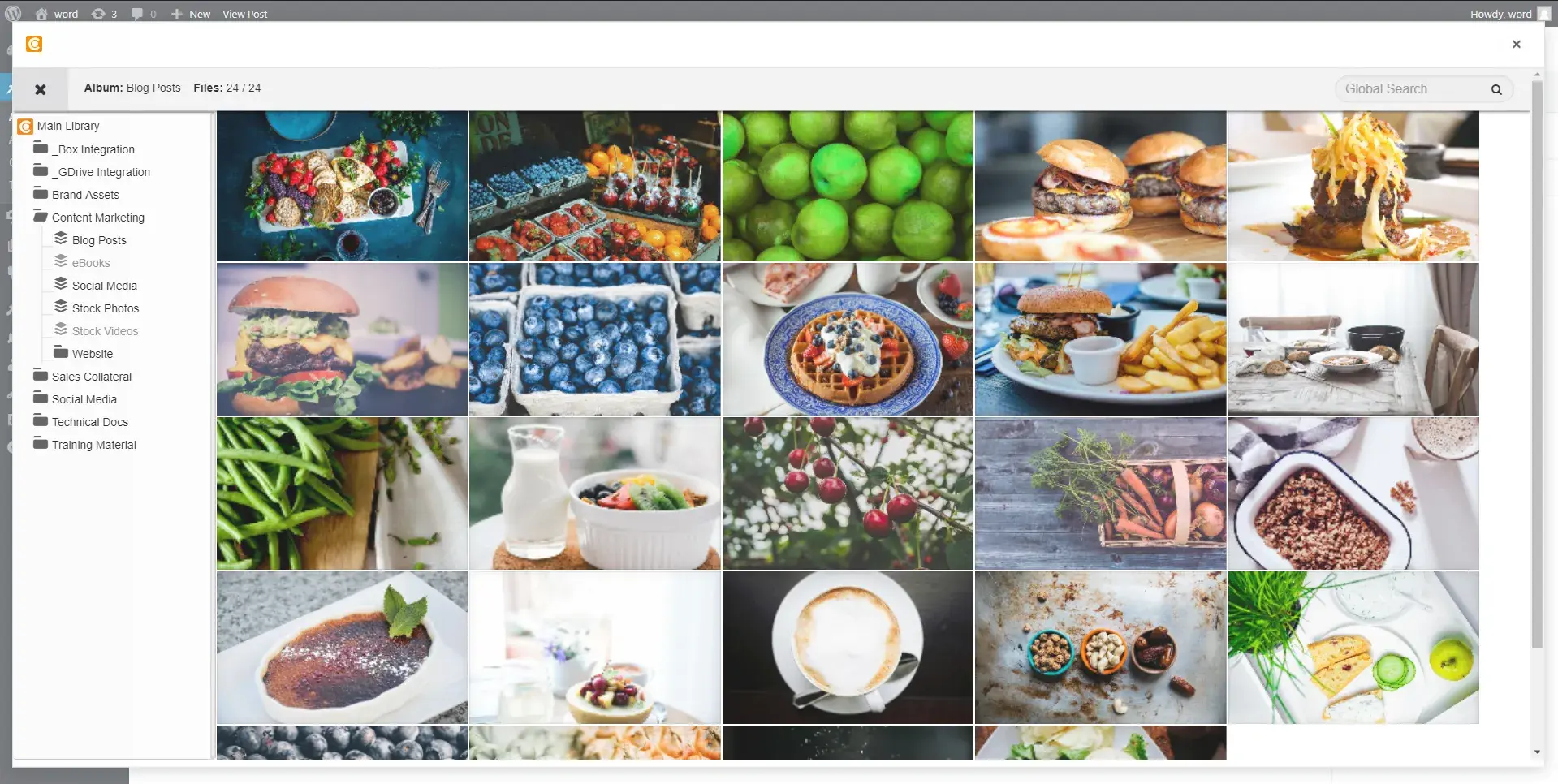
Canto allows companies to download, store, and share assets from a central branded environment. You can search for brand assets with custom metadata fields. Plus, it’s easy to secure and brand your content consistently, thanks to permission-based access and branded portals.
What I like
What sets Canto apart from other enterprise solutions in my mind is its easy-to-use visual interface, which includes features like automatic file organization, watermarking, and copyright license management to simplify team collaboration.
6. Bynder
Best for: Scalability with strong video and templating features
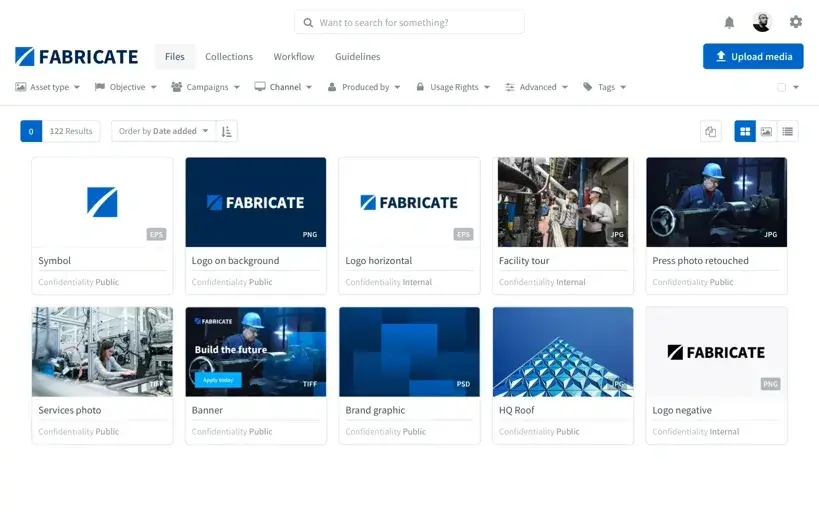
Leveraging AWS global services for scalability and performance, Bynder is used by big brands like Puma, Spotify, TED, and Five Guys. It provides the integrated solution Video Brand Studio, which enables companies to create, adapt, manage, distribute, and analyze video assets faster.
Another feature that sets this proprietary software apart is its templating. It offers digital and print brand templates to make it easier and faster to create more on-brand content.
What I like
Bynder can transform creative files from Photoshop and Sketch into reusable digital templates. It also provides print templates so anyone — not just your designers—can create content that meets your brand guidelines.
Take Control of Your Assets with a DAM Platform
If my experiences of running my own business and working in large teams have taught me anything, it’s that you need a digital asset management platform to organize your assets.
A DAM platform can save you the hassle of draining hours and resources to find the right files at the right time. It can also prevent knowledge loss when employees leave or you unsubscribe from other tools.
Build a consolidated repository of all your organizational assets with varied permission and access levels.
You can also build one yourself with HubSpot. Explore how HubSpot Content Hub can support your content workflows and strategy.
Editor's note: This post was originally published in April 2021 and has been updated for comprehensiveness.
Web Hosting




.jpg)
.webp)






